Age and physical activity: What’s the connection?
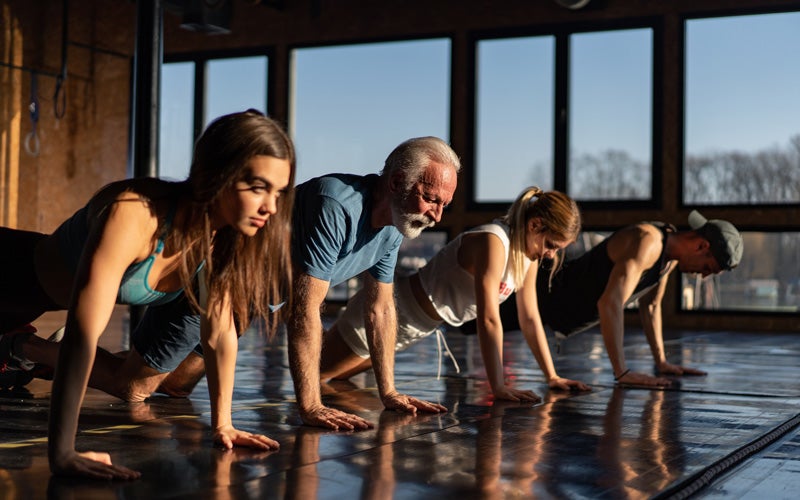 ©Johnce
©Johnce
There are loads of factors that influence your athletic performance. Whether it’s running, yoga, or weight training, you’ll have different exercise needs in your 20s than in your 30s, 40s, and later. Find out here how age and physical activity relate to each other, and what that means for your training and fitness level. Plus we’ve got some tips on physical activity to keep you sharp, no matter what age groups you’re in.
Exercise before 25
Young athletes seem to be bursting with energy and strength – whether you’re watching a junior soccer player or a teenager in the gym. The sex hormone testosterone is mainly responsible for this. It’s one of the most important growth hormones and has a muscle-building effect.
The body produces it in the testicles (in men), in the ovaries (in women), and in the adrenal glands. Even before puberty, boys have significantly higher testosterone levels than girls. This is the reason why athletes assigned male at birth can build muscles faster and develop more strength as compared to athletes assigned female at birth.

Overview of standard testosterone values across ages1:
| Age groups | Women | Men |
| Infants | 0,04-0,20 µg/l | 0,05-3,5 µg/l |
| 1-8 years | 0,03-0,12 µg/l | 0,05-0,15 µg/l |
| 9-12 years | 0,03-0,40 µg/l | 0,10-3,0 µg/l |
| 13-18 years | 0,06-0,50 µg/l | 0,10-9,0 µg/l |
| 18-49 years | 0,15-0,6 µg/l | 2,5-11,5 µg/l |
| 50+ years | 0,03-0,4 µg/l | 1,9-7,4 µg/l |
Muscle building at a young age
From the age of 13, testosterone levels increase significantly, especially in boys, leading to a noticeable increase in performance. Between 15 and 25, testosterone level reaches its maximum, which also affects physical performance. This is the age when a physically active athlete can reach their peak performance. Girls of the same age also show an increase in performance, for example through improvements in coordination, but the build-up of body mass is less pronounced.
The general recommendation is for adolescents not to start with weight training until their skeletal muscles have finished developing. Before this point, a man’s body isn’t yet stable enough for muscle building activity. As a result, injuries, and poor posture can happen sooner, which in turn can cause health problems or chronic conditions in old age.
By the way: If you start an exercise routine early and stick with it for an average of three to five years, you will still benefit from it years later. Muscles have a memory (also referred to as the ‘muscle memory effect’). According to studies2, any activity you perform often enough is stored in the cell nuclei of the muscles. This information can still be retrieved up to ten years later, so you don’t have to start from scratch even after a break, no matter how long. Just think of the expression “it’s like riding a bike.”
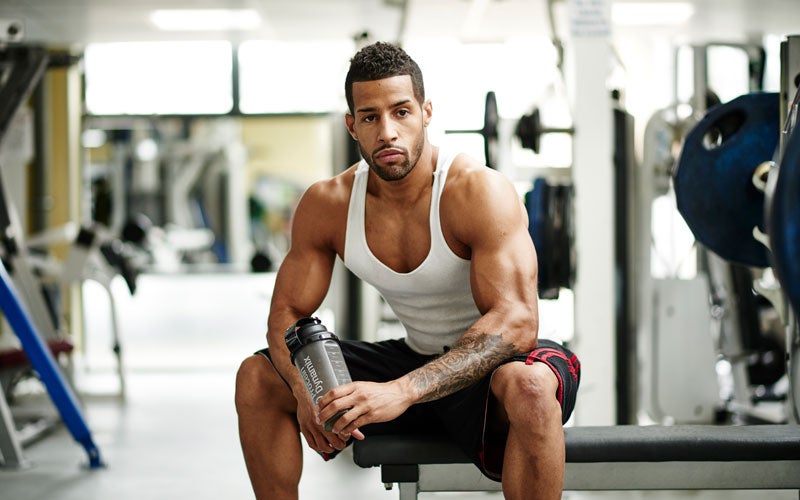
Training after 25
While you can perform at your peak between 15 and 25, the body starts to break down gradually from around your mid-twenties onwards.
Changes in muscle building
Marathon, triathlon or even Iron Man: There are tons of successful endurance athletes who compete beyond the age of 25. In weight training, however, it’s usually a different story. Speed and strength are the first to decline with aging. Various physical processes are to blame:
Research2 has shown that the concentration of free testosterone decreases by about 1.2 percent per year after the age of 25. Likewise, the amount of the growth hormone HGH, which is also a driver for your muscle building, minimizes. In addition, muscles store fewer electrolytes, calcium, and water. This deficiency leads to an overall steady decrease in muscle mass.
Studies3 show that the satellite cells in type 2 muscle fibers – responsible for your speed and strength – diminish in particular. They are responsible for muscle regeneration and growth.
Bones also lose stability and strength due to a decrease in bone density. At the same time, the suppleness of the tendons, ligaments, and joints decreases. The body becomes more immobile and the risk of injury increases.
So if your find your performance stagnating even though you’re following all the principles of exercise, this is a completely natural process from your mid-twenties onwards.
Tip: Pay special attention to your diet now. It is the foundation of your fitness – no matter how old you are. Your body needs energy in the form of carbohydrates and fats, as well as proteins to build your muscles. A balanced diet that supports your health can help compensate for many age-related weaknesses. Our shakes are a great source of support: whether it’s Whey Protein or Vegan Protein, give your body what it deserves.
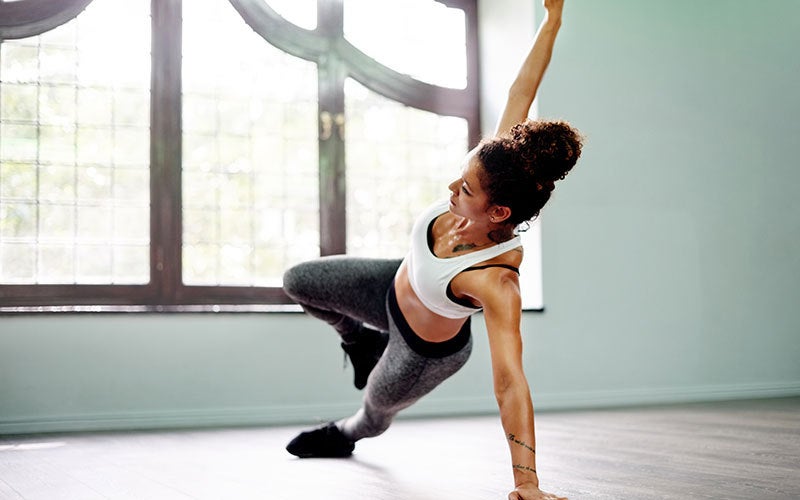
Changes in endurance
Endurance capacity stays with us a little longer than muscle capacity as we get older, but it too declines over time. While the lungs lose elasticity, the muscles of our heart become smaller. As a result, the cardiopulmonary system becomes weaker, which leads to a poorer oxygen supply to the organs.
As a result, the maximum amount of oxygen that can be absorbed by the body during a maximal exercise load (VO2max) decreases by 10 percent per decade, according to research4. In other words, you’ll be out of breath much faster during an intense cardio workout or other physical activity.
The good thing, however, is that this process can be slowed down with targeted physical activity in older adults, so that even at 60 you can still easily manage an endurance run.
Changes in regeneration
At 20, a gym session still feels like a walk in the park; at 30, your couch is your best friend for two days after your workout. The body’s ability to regenerate diminishes over time. Adults over 30 may find it harder to cope with intense physical activity like running or strength-based exercise than younger adults.
One reason for this is that, according to current studies,5 adults’ muscle stem cells gradually stop working over time. Among other things, this means that repair processes take longer and you no longer need just one, but two to three days for recovery.
Changes in mental strength
One positive aspect of aging is that although you may lose strength and endurance, you’ll gain experience. Most older adults are much more aware of what’s good for their bodies at 30 than they were in their early 20s. You’re no longer pushing yourself to the limits during physical activity or risking potential injuries that could keep you out of action for longer.
Instead, you’ll find it easier to maintain a healthy balance between training and recovery. In addition, your mental strength is sharper. During an intense activity session or competition, most experienced athletes are more focused than their younger competitors and are better able to compensate for weaknesses.
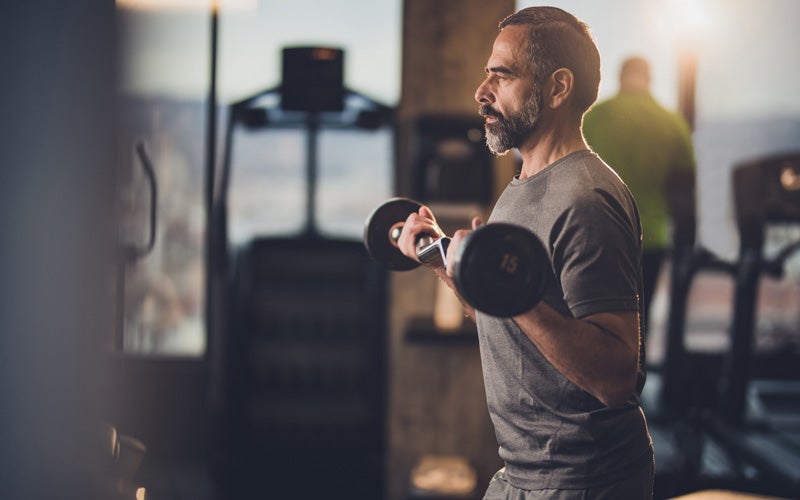
Training after 50
The physical changes that begin around the 25 continue as we get older.
The body loses muscle mass, but the proportion of body fat increases. Between the ages of 50 and 60, the body’s fat reserves increase by about two kilograms while body weight remains the same. Even with two to five hours of physical activity a week, this process cannot be prevented. One reason: According to a study6, fat metabolism slows down in older adults and stored fat is broken down more poorly as a result. This makes it all the more vital to keep a high activity level in order to prevent obesity.
Regeneration also slows down further from age 50, so that performance decreases objectively. Other changes that most older adults can expect include: testosterone deficiency, wear and tear of muscle fibers, storage of metabolic waste products, decrease in elasticity of tendons and ligaments, and limitations in respiratory reserves. All of these factors mean that aging athletes are generally less able to cope with higher physical activity loads.
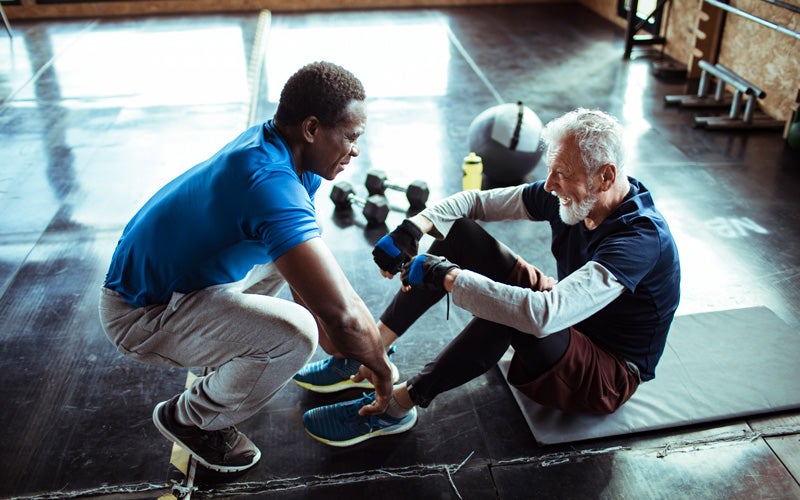
Tips for lifelong fitness
The aging process and declining fitness levels aren’t something we can stop. But that doesn’t mean that going to the gym or keeping up your activity levels isn’t worth the time. On the contrary, health-oriented exercise has been shown7 to reduce biological age in adults and can have health benefits of preventing illnesses, such as heart attacks. So make sure you keep regular physical activity a part of your routine for your quality of life and mental health!
Here are a few tips for your preventive exercise routine:
1. Exercise 15 minutes daily
Daily 15 to 30 minutes of moderate intensity endurance-based physical activities – walking, light jogging, or cycling – can slow the natural reduction in VO2max, according to research8 .
This means your organs are better supplied with oxygen, so you can maintain your performance at a higher level in the long term.
2. Strengthen your muscles with weight training
Two to three moderate intensity weight training sessions per week are optimal for health-oriented fitness. With exercises for the whole body, you can specifically strengthen the type 2 muscle fibers, i.e. your speed and strength, so that they wear out less quickly as you get older.
Strength training also helps strengthen your muscles around the spine, so age-related back pain can be prevented or alleviated more quickly. Plus, strength training can increase bone density, preventing osteoporosis.
Plus, muscle-building training can boost testosterone production. This hormone is known to be responsible for building and repairing muscle fibers and decreases throughout life.
3. Balance training for improved coordination
In old age, it becomes increasingly difficult to control the body. This is partly due to a weakening sense of balance. You can strengthen your balance and motor function while you’re still younger by doing specific exercises.
With balance training, but also with yoga or Pilates, you can improve the cooperation between your brain and muscles. Your fine motor skills and coordination abilities will last longer.
In addition, balance exercises have been shown to prevent9/10 injuries and strengthen your deep muscles, especially in the trunk and around the spine. This can save you from back pain in the long run.
4. Support regeneration
Older adults’ bodies need longer to recover. So it’s even more important to make good use of breaks in training and to support your system in the best possible way. Sufficient sleep, fresh air, moderate exercise, and a healthy diet with all important nutrients are the supporting pillars.
You can help with supplements that boost your regeneration: Our Daily Vitamins, for example, provide you with all the essential vitamins your body needs every day.

Summary
- Between ages 15 and 25, you’re at your peak performance abilities.
- From your mid-twenties onwards, muscle mass, strength, endurance, and mobility steadily decrease. Recovery takes longer and injuries are more likely.
- It’s worth targeting speed and strength training while still young, as type 2 muscle fibers are the first to decline with age.
- Regular physical activity can maintain your resilience well into your later years.
- Balance training, yoga, and Pilates can help improve fine motor skills and coordination over the long term.
- A healthy, balanced diet and adequate recovery are the foundation for lifelong fitness across all age groups.
Sources for this article
We at foodspring use only high-quality sources, including peer-reviewed studies, to support the facts within our articles. Read our editorial policy to learn more about how we fact-check and keep our content accurate, reliable, and trustworthy.
- 1TESTOSTERON Referenzbereiche („Normalbereiche“) Plasma/Serum. Maria Zeilinger (2017). https://www.med4you.at/laborbefunde/referenzwerte/referenzbereiche_testosteron.htm
- 2Myonuclei acquired by overload exercise precede hypertrophy and are not lost on detraining, J. C. Bruusgaard, I. B. Johansen, I. M. Egner, Z. A. Rana, K. Gundersen (2010). https://pubmed.ncbi.nlm.nih.gov/20713720/
- 3Satellite cell content is specifically reduced in type II skeletal muscle fibers in the elderly, Lex B. Verdijk, René Koopman, Gert Schaart (2006). https://pubmed.ncbi.nlm.nih.gov/16926381/
- 4Aging among elite distance runners: a 22-yr longitudinal study, S. W. Trappe, D. L. Costill, M. D. Vukovich, J. Jones, T. Melham (1996). https://journals.physiology.org/doi/abs/10.1152/jappl.1996.80.1.285
- 5Muscle stem cell aging: regulation and rejuvenation, Pedro Sousa-Victor, Laura García-Prat, Antonio L. Serrano (2015). https://www.sciencedirect.com/science/article/abs/pii/S1043276015000508
- 6Adipose lipid turnover and long-term changes in body weight, P. Arner, S. Bernard, L. Appelsved (2019). https://www.nature.com/articles/s41591-019-0565-5
- Antonio L. Serrano (2015). https://www.sciencedirect.com/science/article/abs/pii/S1043276015000508
- 8Decline in VO2max with aging in master athletes and sedentary men, M. A. Rogers, J. M. Hagberg, W. H. Martin (1990). https://journals.physiology.org/doi/abs/10.1152/jappl.1990.68.5.2195
- 9Relationship between balance ability, training and sports injury risk, Con Hrysomallis (2007). https://pubmed.ncbi.nlm.nih.gov/17503879/
- 10Balance Training Programs in Athletes – a Systematic Review, Anna Brachman, Anna Kamieniarz, Justyna Michalska (2017). https://www.ncbi.nlm.nih.gov/pmc/articles/PMC5548154/
































